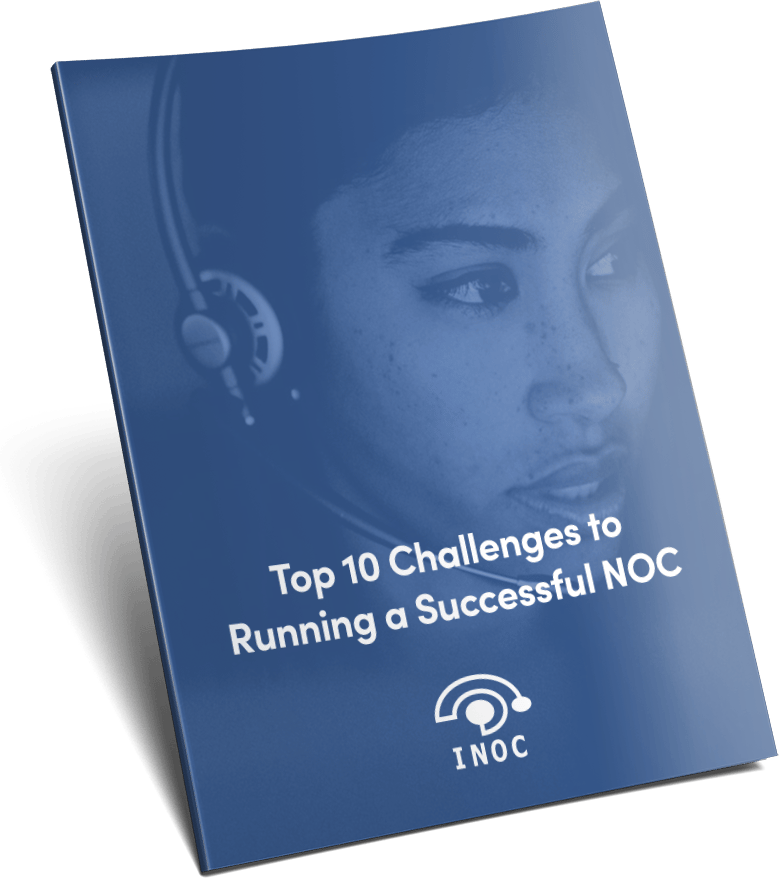
There are several components that make up the cost of running a 24x7 NOC. Costs can vary widely depending on factors like the size and complexity of the supported environment, number of staff required, and the type of equipment and software used. Some of the costs of operating a NOC internally include, but are by no means limited to:
Staff: These include costs incurred in hiring and retaining skilled staff, salaries and benefits, as well as any training or professional development expenses.
Tools: The NOC may require a variety of hardware and software, as well as access to various communication tools and technologies, such as phone systems, messaging platforms, and collaboration software.
Facilities: The NOC may need to be housed in a dedicated space, which may require rent or lease payments, utilities, and maintenance expenses.
Take staff, for example. The staff required to support a 24x7 NOC include not only front-line technicians and engineers but also back-end support groups such as systems and network engineering, service transition, human resources, and customer advocacy.
Resources also need to be allocated for training NOC staff when they are initially hired, as well as when onboarding new customers, and whenever changes are made to existing support or new technologies are introduced. Systems, network connectivity, and security controls need to be deployed in either a data center or the cloud to house the various tools and applications required by the NOC to operate. Resources for ongoing support need to be included.
All of these components present a formidable operating expense but have to be considered in building a successful NOC. Too often, NOCs are built considering only a subset of the above components, and as a result, they struggle to scale and deliver on the required service and financial objectives of the organization.
Given the costs, complexity, access to tools, and expertise required to properly monitor, manage, review, and optimize multi-technology, multi-vendor systems, handing some or all support over to a service provider solely devoted to NOC support offers many organizations the easiest, most cost-effective path to the highest quality support for themselves and/or their customers.
Apart from the mountain of capital expenditures required to stand up and operationalize a 24x7 NOC, large organizations (enterprises, communication service providers, etc.), have to overcome the long list of operational challenges we cover in this white paper. These can pose significant practical problems that only further underscore the value of outsourcing support to a provider that has solved for these challenges.
While costs impact every component of this decision-making process, it’s important to understand the basic math that serves as the most straightforward and compelling factor in many situations.
We’ve broken the question of cost into two main areas: staffing and platform.
Given that most NOCs require, at minimum, a team of ten to provide reliable 24/7/365 support, comparing the total in-house human resource expenditures to a much smaller team of outsourced FTEs operating in a fully mature NOC environment can lead to a stark realization.
For most companies, staffing a NOC is often a needlessly high expenditure compared to outsourcing that support. A plan that doesn’t consider this opportunity might, for example, call for a staff of 12 full-time employees, when in fact, the same or likely better support could be provided through an outsourced service solution that takes full advantage of an economy of scale to provide far better service at a far lower cost.
Apart from staffing, the cost of acquiring, implementing, and integrating a full suite of NOC tools only further tips the scale in favor of outsourcing much of the time.
Monitoring, ticketing, knowledge centralization, and reporting are just a few essential NOC functions requiring tools. Together, these can constitute a massive expenditure even though, in most homegrown NOCs, their low utilization doesn’t justify their high price tags. More recent technologies like machine learning and automation (AIOps) only add to the balance sheet, not to mention the difficulty of implementation.
It’s not uncommon for companies to learn that given the payroll and overhead costs of building a NOC in-house, electing for outsourced support can cut their total cost of ownership in half.
Much of these cost savings are realized beyond the obvious expenditures. A litany of important cost questions can remain in the blindspot, only to surface later as expensive problems when they went unanswered at the outset of the build.
We’ve included a sample of these questions below in addition to the more general cost considerations.

Download our free white paper and learn how to overcome the top challenges in running a successful NOC.
